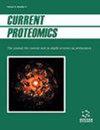4-羟基壬烯醛修饰蛋白在精神分裂症脑组织中的表达分析参与氧化还原失调的相关性
IF 0.5
4区 生物学
Q4 BIOCHEMICAL RESEARCH METHODS
引用次数: 2
摘要
氧化损伤与精神分裂症的病理生理有关。氧化还原失衡可能导致脂质过氧化增加,从而产生有毒醛,如4-羟基壬烯醛(4-HNE),最终导致氧化应激。相反,氧化应激的影响指向精神分裂症中hne蛋白加合物和酶和抗氧化系统活性的改变。目前的研究重点是鉴定hne -蛋白加合物及其在氧化应激,特别是脂质过氧化引起的精神分裂症病理中的相关分子后果。对精神分裂症患者及其相应的正常健康对照者的脑皮层和海马区的7个尸检样本进行了氧印迹检测。此外,还评估了与氧化应激相关的硫代巴比妥酸物质(TBARS)、还原型谷胱甘肽(GSH)水平和过氧化氢酶(CAT)活性。获得的结果表明,精神分裂症患者的氧化应激水平明显高于健康对照组,其表现为hne -蛋白加合物的表达升高。有趣的是,与大脑皮层相比,精神分裂症的海马区显示出更多的HNE蛋白加合物。在SZ脑中观察到过氧化氢酶活性增加(4.8876±1.7123),而抗氧化GSH水平降低(0.213±0.015µmol/ml)。与对照组相比,SZ患者脑区tbars水平升高(0.3801±0.0532ug/ml),反映了脂质过氧化(LPO)的增加。结论:我们认为HNE修饰蛋白可能与精神分裂症的病理有关。我们的数据显示,由于TBARS的产生增加,脂质过氧化作用增加。此外,与谷胱甘肽和CAT相关的细胞抗氧化剂通路的改变也强调了氧化应激在精神分裂症病理中的作用。本文章由计算机程序翻译,如有差异,请以英文原文为准。
Expression Analysis of 4-Hydroxynonenal Modified Proteins in Schizophrenia Brain; Relevance to Involvement in Redox Dysregulation
Oxidative damage contributes to the pathophysiology of schizophrenia (SZ). Redox imbalance may
lead to increased lipid peroxidation, which produces toxic aldehydes like 4-hydroxynonenal (4-HNE) ultimately leading to
oxidative stress. Conversely, implications of oxidative stress points towards an alteration in HNE-protein adducts and
activities of enzymatic and antioxidant systems in schizophrenia.
Present study focuses on identification of HNE-protein adducts and its related molecular consequences in
schizophrenia pathology due to oxidative stress, particularly lipid peroxidation.
Oxyblotting was performed on seven autopsied brain samples each from cortex and hippocampus
region of schizophrenia patients and their respective normal healthy controls. Additionally, thiobarbituric acid substances
(TBARS), reduced glutathione (GSH) levels and catalase (CAT) activities associated with oxidative stress, were also
estimated.
Obtained results indicates substantially higher levels of oxidative stress in schizophrenia patients than healthy
control group represented by elevated expression of HNE-protein adducts. Interestingly, hippocampus region of
schizophrenia brain shows increased HNE protein adducts compared to cortex. An increase in catalase activity (4.8876 ±
1.7123) whereas decrease in antioxidant GSH levels (0.213 ± 0.015µmol/ml) have been observed in SZ brain. Elevated
TBARS level (0.3801 ± 0.0532ug/ml) were obtained in brain regions SZ patients compared with their controls that reflects
an increased lipid peroxidation (LPO).
Conclusion: We propose the role of HNE modified proteins possibly associated with the pathology of
schizophrenia. Our data revealed increase lipid peroxidation as a consequence of increased TBARS production.
Furthermore, altered cellular antioxidants pathways related to GSH and CAT also highlight the involvement of oxidative
stress in schizophrenia pathology.
求助全文
通过发布文献求助,成功后即可免费获取论文全文。
去求助
来源期刊

Current Proteomics
BIOCHEMICAL RESEARCH METHODS-BIOCHEMISTRY & MOLECULAR BIOLOGY
CiteScore
1.60
自引率
0.00%
发文量
25
审稿时长
>0 weeks
期刊介绍:
Research in the emerging field of proteomics is growing at an extremely rapid rate. The principal aim of Current Proteomics is to publish well-timed in-depth/mini review articles in this fast-expanding area on topics relevant and significant to the development of proteomics. Current Proteomics is an essential journal for everyone involved in proteomics and related fields in both academia and industry.
Current Proteomics publishes in-depth/mini review articles in all aspects of the fast-expanding field of proteomics. All areas of proteomics are covered together with the methodology, software, databases, technological advances and applications of proteomics, including functional proteomics. Diverse technologies covered include but are not limited to:
Protein separation and characterization techniques
2-D gel electrophoresis and image analysis
Techniques for protein expression profiling including mass spectrometry-based methods and algorithms for correlative database searching
Determination of co-translational and post- translational modification of proteins
Protein/peptide microarrays
Biomolecular interaction analysis
Analysis of protein complexes
Yeast two-hybrid projects
Protein-protein interaction (protein interactome) pathways and cell signaling networks
Systems biology
Proteome informatics (bioinformatics)
Knowledge integration and management tools
High-throughput protein structural studies (using mass spectrometry, nuclear magnetic resonance and X-ray crystallography)
High-throughput computational methods for protein 3-D structure as well as function determination
Robotics, nanotechnology, and microfluidics.
 求助内容:
求助内容: 应助结果提醒方式:
应助结果提醒方式:


